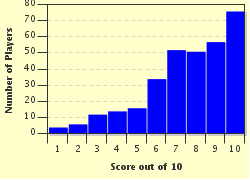Quiz Answer Key and Fun Facts
1. Aikido was derived mainly from a type of another martial art, founded by Takeda Sokaku, of whom Morihei Ueshiba, the founder of aikido, was a famous student. Called Daito-ryu, of which martial art is it a branch?
2. The usual etiquette upon entering the dojo, the aikido training room, is to bow toward the portrait of Morihei Ueshiba, "Osensei" ("great teacher"), before you step onto the mats that cover the training hall floor. What are these mats called?
3. The junior grades in aikido are called "kyu", meaning "grade" or "rank", and the number decreases as the grade increases, up to brown belt which is 1st kyu. Which of these boys' names is the term for black belt grades?
4. Which of these men introduced aikido to Ireland, and became the first Irishman to study directly under Osensei?
5. In aikido, tantotori (or tantodori) refers to defending yourself from what?
6. Which throw or entanglement, which involves locking the arms together in the cross-shape, is named based on the corresponding Kanji symbol which looks like a cross?
7. What is the name of the strikes or feints used in aikido to startle, distract or imbalance an opponent?
8. The uke is the partner in aikido who "receives" a defensive technique, which is known as "taking ukemi". There are several terms for the partner who is the opposite of uke, i.e. the one who performs the technique. Which of these girls' names is one such term?
9. Which of these men is an aikidoka who studied under Osensei for more than a decade? He reached 8th dan in 1990, making New York Aikikai one of few dojos to have two 8th dan instructors.
10. Suwari Waza is the name for techniques performed between partners while in the formal seated position of Japanese culture. What is this position called, upon the knees with the buttocks resting on the heels?
Source: Author
reeshy
This quiz was reviewed by FunTrivia editor
stuthehistoryguy before going online.
Any errors found in FunTrivia content are routinely corrected through our feedback system.

